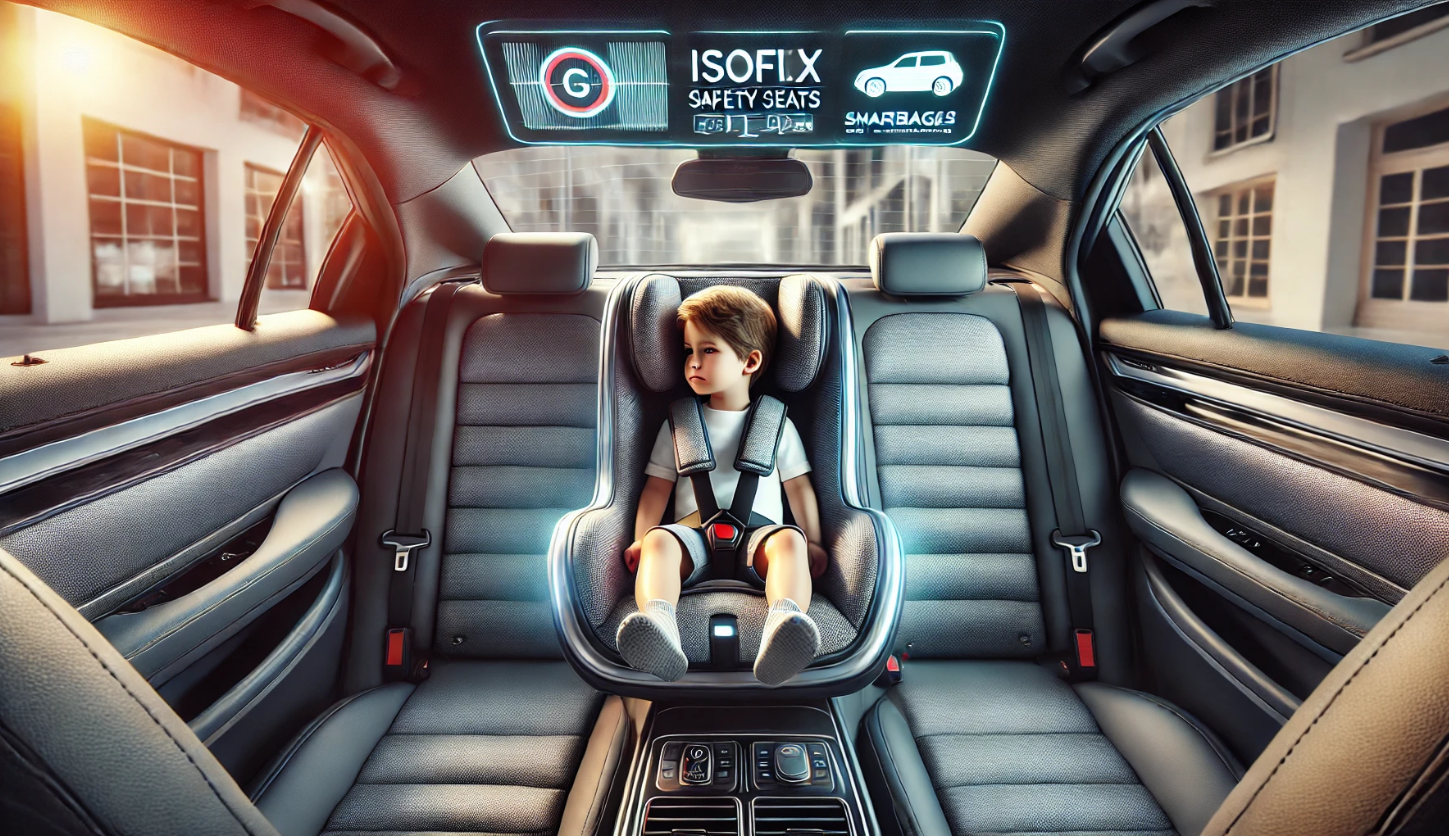Road safety remains a top priority as advancements in technology and awareness campaigns aim to minimize accidents and enhance protection for all passengers. A vital part of this ongoing mission is the focus on child safety and the development of innovative features that ensure the well-being of the youngest passengers. This article explores the cutting-edge trends in automotive safety, with special emphasis on child safety seats and their role in modern vehicles.
The Evolution of Safety Technologies
The automotive industry in 2024 continues to innovate, integrating advanced systems to create safer driving experiences. Key developments include:
Active Safety Features
Active safety systems are designed to prevent accidents before they occur. Examples include:
- Automatic Emergency Braking (AEB): Detects potential collisions and applies brakes autonomously to reduce the impact.
- Lane-Keeping Assistance (LKA): Ensures vehicles stay within their designated lanes, reducing the likelihood of side collisions.
- Adaptive Cruise Control (ACC): Maintains a safe following distance by automatically adjusting vehicle speed.
Passive Safety Innovations
Passive systems protect passengers during collisions. Highlights include:
- Advanced Airbag Systems: Featuring multi-stage deployment for optimal protection.
- Crash-Resistant Vehicle Frames: Built with high-strength steel to absorb impact forces effectively.
- Seatbelt Pretensioners: Automatically tighten seatbelts in the event of a collision, minimizing movement.
The Critical Role of Child Safety Seats
Child safety seats are essential for safeguarding young passengers. Despite technological advancements, improper usage or installation of child seats remains a significant concern. Here’s why child safety seats are indispensable:
Designed for Vulnerable Passengers
Children’s bodies are more fragile than adults, and standard seatbelts may not provide adequate protection. Child safety seats are tailored to their specific needs, offering:
- Size-Appropriate Support: Protects smaller bodies by distributing impact forces more evenly.
- Side-Impact Protection: Shields children from side collisions with padded headrests and reinforced frames.
- Rear-Facing Configurations: Recommended for infants and toddlers, rear-facing seats provide superior support for the head, neck, and spine in a crash.
Regulations and Standards
Governments worldwide are enforcing stricter regulations on child safety seats. In 2024, these include:
- Universal Isofix Systems: Ensuring secure installation by anchoring child seats directly to the car frame.
- Height and Weight Guidelines: Mandating appropriate seat types based on a child’s age, height, and weight.
- Dynamic Crash Testing: Ensuring seats meet stringent safety benchmarks.
Innovations in Child Safety Seats
Modern child safety seats incorporate advanced features for enhanced protection and convenience:
- Smart Sensors: Detect incorrect installation and alert parents via smartphone apps.
- Energy-Absorbing Materials: Reduce the force of impact during collisions.
- Convertible Designs: Adaptable to different age groups, these seats grow with the child, eliminating the need for frequent replacements.
Parental Awareness and Education
Despite the availability of high-tech child seats, parental education remains crucial. Common issues include:
- Incorrect Installation: Studies show a significant number of child seats are improperly installed, negating their safety benefits.
- Premature Seat Transition: Transitioning children to booster seats or standard seatbelts too early increases risks.
- Misuse of Harnesses: Incorrectly adjusted harnesses fail to secure the child properly during an impact.
Car manufacturers and safety organizations are addressing these issues through:
- Installation Tutorials: Providing step-by-step guides for correct usage.
- Awareness Campaigns: Educating parents about the importance of child safety seats via social media and workshops.
- Onboard Alerts: Some vehicles now feature systems that monitor child seat status and alert drivers if issues are detected.
The Integration of Safety Systems with Child Protection
Modern vehicles are designed with a holistic approach to safety, ensuring that active and passive systems work in tandem with child safety measures. Notable advancements include:
- Rear-Seat Monitoring Systems: Prevent incidents of children being accidentally left in vehicles by alerting drivers.
- Crash-Test Ratings for Child Seats: Car manufacturers collaborate with child seat makers to achieve optimal performance during simulated collisions.
- Automatic Locking Retractors (ALR): Simplify the process of securing child seats using the car’s seatbelt system.
Future Trends in Child and Automotive Safety
As technology continues to evolve, several trends are shaping the future of child safety in vehicles:
- AI-Driven Safety Features: Artificial intelligence monitors driver behavior, road conditions, and child seat status to prevent accidents.
- Integration with Smart Vehicles: Child seats equipped with IoT (Internet of Things) technology communicate with the car, ensuring optimal placement and functionality.
- Focus on Sustainability: Manufacturers are adopting eco-friendly materials for child seats without compromising safety.
A Shared Responsibility
Ensuring the safety of all passengers, especially children, requires a collaborative effort between parents, manufacturers, and policymakers. While technology provides robust tools, responsible usage and adherence to safety guidelines remain paramount.
By embracing these innovations and prioritizing education, society can create safer environments for children on the road, reducing accidents and saving lives.
Conclusion
The advancements in automotive safety and the continuous improvement of child safety seats reflect a commitment to protecting the most vulnerable passengers. As we move forward, integrating these systems into everyday life and emphasizing their correct use will play a crucial role in ensuring safer roads for all.


